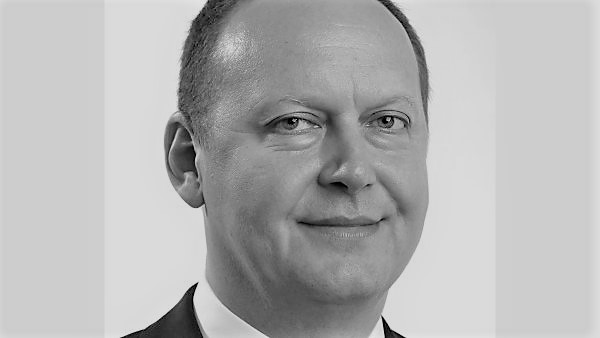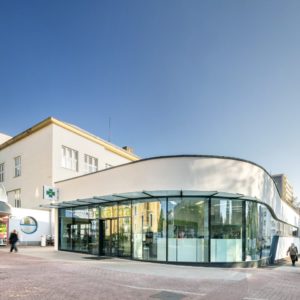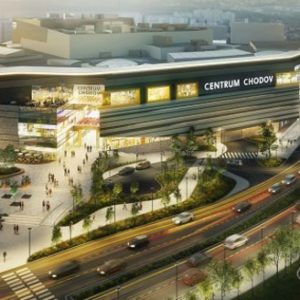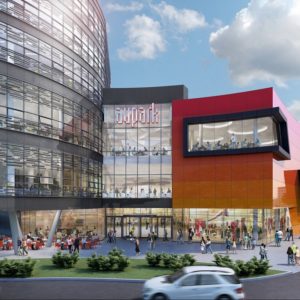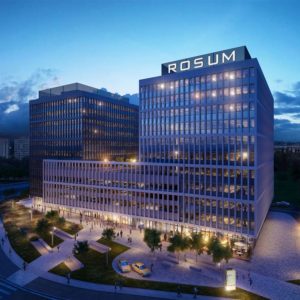In the Czech market, your company has the broadest range of services in the field of architecture and designing,
engineering, technical equipment of buildings, etc. Which of the current activities of the company do you consider
the priority, and what will the company Obermeyer Helika focus on in its development?
Division of architecture and design is of course the biggest one, but we want to offer our customers a truly
comprehensive service in order to be at their disposal from an early stage of the project preparation to its actual
completion. As for the company development, it has been a year since we successfully completed the merger of the
companies Helika, Obermeyer Albis – Stavoplan and Obermeyer HVAC, with Obermeyer Helika, a.s. being the successor
organization. This year we have also celebrated twenty-five years of successful operation in the Czech market, and
we have set some strategic goals for the future. The essential one is to ensure the position of Obermeyer group in
the international market, where it should be seen as an efficient, profitable and modern society. We want to focus
on key products, where we are at the European top. We put emphasis on advanced technologies, which include the
revolutionary way of designing by using BIM method, in which we are one of the spearheads in the Czech Republic.
We do not neglect the motivation and development of employees either. It is important that their work was still
efficient and of high quality, which is logically always reflected in the further increase of customers´ satisfaction.
You portfolio contains a broad a range of building extensions and reconstructions of public buildings, often
of hospitals. What importance do you attach to this kind of realizations?
We really have an extensive experience in reconstructions and modernizations of public buildings, in particular
medical facilities, both at home and abroad. Naturally, we attach a great importance to them, being aware of their
significance, and knowing that such a job requires a high qualification and know-how. Our projects include the
extension and reconstruction of the Oncological Institute of St. Elizabeth in the center of Bratislava, the reconstruction
of the maternity and children’s department at the University Hospital Motol in Prague, or reconstruction of acute
surgical operations at the Thomayer Hospital in Prague. As regards the international projects, significant medical
facilities designed by Obermeyer group include, for example, a large medical complex in Al Ain city in the United Arab
Emirates, providing its patients with more than 700 beds. Thanks to our projects we know how demanding the work
in health care is, and we believe our conscientious work contributes to creating pleasant working environment for
the medical staff and a welcoming place for patients, not causing fear and mistrust, but helping them to better bear
up a hospital stay.
What is the position of the department of restoring territorial units and buildings in the list of your projects?
We are always trying to create not only individual buildings, but also a specific character of the city. Each project
is a new challenge for us, with each building requiring to think about in a broader context – about its overall
incorporation into the surroundings, its connection to the infrastructure, public transport, public greenery, etc.
When planning and designing our buildings we often consult with experts from various fields – with scientists,
artists, graphics, sociologists, doctors, historians and critics of architecture and fine arts. We also use experience
from cooperation with reputable European architectural studios and renowned architects, such as the Office for
Metropolitan Architecture, Heinrich Böll, Massimiliano Fuksas Architetto Studio Capelli Architettura, Benoy, etc. Each
designed object is then embedded into the urban design in accordance with principles of sustainable development,
with a sense of proportion, while considering the historical context and the environment.
A complex revitalization of former bakeries Odkolek in Vysočany, Prague, is one of the projects currently being
prepared. What is unique about this project? What kind of challenge does it represent for you, and what is its
contribution from the point of view of its public impact (infrastructure, etc.)?
Our design seeks to seamlessly blend the context of a citywide green (Flajšnerka park, Klíčov park), to continue the
development of urban street buildings from the central part of Vysočany, and to connect to the villa neighborhood
beginning in the street Pod Krocínkou. The Odkolek complex is located in the intersection of all these urbanistically
very important aspects. The former mill of Odkolek bakeries is statically in a worse state, and due to its diverse
composition its full usability is difficult. Our effort and challenge at the same time is to preserve all of its valuable
parts, which will be sensitively supplemented with new construction in the contours and volume of the current state
of the building. This regeneration associated with the use of a new building for housing, retail and culture, will
maintain its original charm of the industrial architecture, while the object will again serve for the life of local people.
The project also respects the morphology of the terrain and the division of the territory into two distinct parts. The
lower part enables the linking and development of new urban street residential buildings, and for bringing life into
the area will suggest some business and other units in the parterre. A multipurpose building will be constructed in
the part nearest to the subway, also acting as a barrier against the busy road. In the upper part of the complex, the
housing development is loosened and it follows the character of the streets of the villa area beginning in the street
Pod Krocínkou. The built-up area is complemented with friendly landscaping, based on a number of free lawns planted
with native shrubs and trees. In these green areas, free public spaces for residents and visitors of the complex (plaza,
park, playground, promenade, water features) are purposefully embedded.
Why are the projects of complex revitalization of former industrial sites or buildings so attractive for developers?
For us it is definitely a great opportunity and challenge of combining several key factors – the use of space, history,
genius loci, and the opportunity to be really close to people, inhabitants. The brownfield sites offer potential for smart
development and its realization has positive social and economic impact on the area. Thus, it means an opportunity
for us to participate in exciting projects and to be, as people say, “there”.
How should a properly conceived territorial unit look like, from the current topic of AW 2016, as a part of an organic
city?
It should harmoniously combine individual elements – interconnecting the landscape and the town with its
surroundings, while being friendly to residents, ensuring the multifunctionality of its use, being “alive” throughout
the day, including residential parts, administrative parts, offering complex services, excellent transport links, leisure
activities and natural public spaces for spending leisure time and for meetings. In short, it should be a multifunctional
complex providing all the amenities, constructions for living, working, and opportunities for leisure time.
Zdroj: Redakce AW – Organics City 2016






 Čeština
Čeština